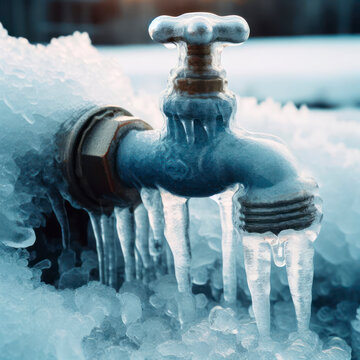Ways to Maintain Your Pipes from Cold Weather Issues: Essential Advice
Ways to Maintain Your Pipes from Cold Weather Issues: Essential Advice
Blog Article
What are your insights and beliefs about How to Prevent Your Pipes From Freezing?

Winter can wreak havoc on your plumbing, specifically by freezing pipelines. Right here's just how to avoid it from taking place and what to do if it does.
Introduction
As temperature levels decrease, the danger of icy pipes boosts, potentially leading to pricey repairs and water damage. Understanding exactly how to stop icy pipes is crucial for homeowners in cold climates.
Prevention Tips
Protecting vulnerable pipes
Wrap pipelines in insulation sleeves or make use of warm tape to safeguard them from freezing temperature levels. Focus on pipes in unheated or external areas of the home.
Home heating techniques
Keep indoor areas appropriately heated, especially areas with plumbing. Open closet doors to allow cozy air to circulate around pipelines under sinks.
How to determine icy pipelines
Seek decreased water circulation from taps, uncommon odors or sounds from pipes, and noticeable frost on revealed pipes.
Long-Term Solutions
Architectural changes
Take into consideration rerouting pipelines far from outside wall surfaces or unheated locations. Add added insulation to attics, cellars, and crawl spaces.
Upgrading insulation
Purchase high-quality insulation for pipes, attic rooms, and walls. Appropriate insulation assists preserve consistent temperature levels and decreases the danger of icy pipes.
Safeguarding Exterior Plumbing
Yard tubes and outside taps
Disconnect and drain pipes garden hose pipes prior to winter months. Mount frost-proof faucets or cover outdoor faucets with shielded caps.
Recognizing Frozen Pipelines
What causes pipelines to freeze?
Pipelines ice up when exposed to temperature levels listed below 32 ° F (0 ° C) for expanded periods. As water inside the pipes ices up, it expands, taxing the pipe walls and possibly triggering them to rupture.
Threats and damages
Icy pipes can cause water disruptions, home damage, and expensive repairs. Burst pipes can flooding homes and create considerable architectural damages.
Indicators of Frozen Water Lines
Identifying frozen pipelines early can stop them from bursting.
What to Do If Your Pipes Freeze
Immediate actions to take
If you believe icy pipes, maintain taps open up to relieve pressure as the ice melts. Utilize a hairdryer or towels taken in warm water to thaw pipelines slowly.
Verdict
Protecting against frozen pipelines requires aggressive procedures and fast feedbacks. By recognizing the reasons, signs, and safety nets, property owners can secure their pipes during cold weather.
6 Proven Ways to Prevent Frozen Pipes and Protect Your Home
Disconnect and Drain Garden Hoses
Before winter arrives, start by disconnecting your garden hoses and draining any remaining water. Close the shut-off valves that supply outdoor hose bibs and leave the outdoor faucet open to allow any residual water to drain. For extra protection, consider using faucet covers throughout the colder months. It’s also important to drain water from any sprinkler supply lines following the manufacturer’s directions.
Insulate Exposed Pipes
Insulating your pipes is an effective way to prevent freezing. Pipe insulation is readily available at home improvement stores and is relatively inexpensive. Pay close attention to pipes in unheated areas such as the attic, basement, crawl spaces, or garage. Apply foam insulation generously to create a buffer against the cold. You can also wrap your pipes in heat tape or thermostat-controlled heat cables for added warmth.
Seal Air Leaks
Inspect your home for any cracks or openings that could let in cold air. Seal any holes around the piping in interior or exterior walls, as well as the sill plates where your home rests on its foundation. Additionally, make sure to keep your garage door closed unless you’re entering or exiting. Leaving it open creates a significant air leak that can lead to frozen pipes.
Allow Warm Air Circulation
During cold snaps, it’s essential to allow warm air to circulate evenly throughout your home. Leave interior doors ajar to promote better airflow. Open kitchen and bathroom cabinets to help distribute heat consistently around the rooms. If you have small children or pets, be sure to remove any household chemicals or potentially harmful cleaners from open cabinets for safety.
Let Faucets Drip
A small trickle of water can make a big difference in preventing ice formation inside your pipes. When temperatures drop significantly, start a drip of water from all faucets served by exposed pipes. This continuous flow helps prevent the water from freezing. Additionally, running a few faucets slightly can relieve pressure inside the pipes, reducing the chances of a rupture if the water inside does freeze.
https://choateshvac.com/6-proven-ways-to-prevent-frozen-pipes-and-protect-your-home/

Hopefully you liked our post about How to prepare your home plumbing for winter weather. Thanks a ton for spending some time to read through our piece. Do you know about somebody else who is in the market for the subject? Take a moment to promote it. Thanks for going through it.
Call Today Report this page